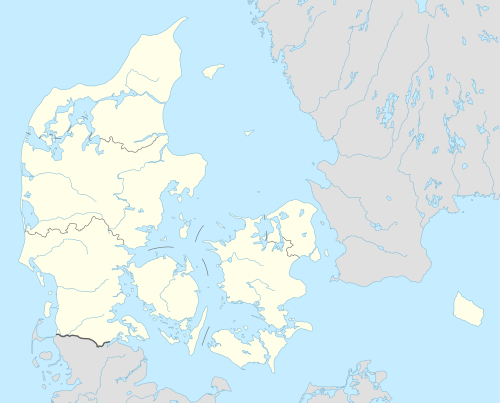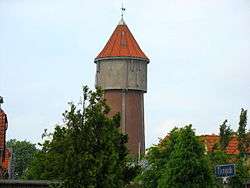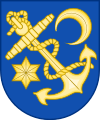Struer, Denmark
| Struer | ||
|---|---|---|
|
The old water tower in Struer | ||
| ||
 Struer Location in Denmark | ||
| Coordinates: DK 56°29′8″N 08°35′23″E / 56.48556°N 8.58972°ECoordinates: DK 56°29′8″N 08°35′23″E / 56.48556°N 8.58972°E | ||
| Country | Denmark | |
| Region | Central Jutland (Midtjylland) | |
| Municipality | Struer | |
| Settled | 17th century | |
| Incorporated (city) | 1917 | |
| Population (1 January 2014) | ||
| • Total | 10,261[1] | |
| Time zone | Central European Time (UTC+1) | |
| • Summer (DST) | European Summer Time (UTC+2) | |
| Postal code | 7600 | |
| Website | Struer Municipality | |
Struer is the main town of the kommune of Struer, Region Midtjylland, Denmark with a population of 10,261 (1 January 2014).[2]
The town of Struer owes its growth to the railroad, which arrived in 1865 with Jutland's first railroad line from Århus/Randers over Viborg to Skive and Struer. Before its arrival Struer was a little town, that primarily functioned as a harbour for the residents of Holstebro; but after its arrival the town grew explosively into a big town, and eventually became one of Denmark's most important railway connection points. Although the station has been expanded several times, the central part of the wellmaintained building is one of Denmark's oldest stations. One of the oldest station buildings now house the administration and science labs of Struer statsgymnasium, one of the few Danish schools that offer the International Baccalaureate program. The school also has the Danish STX (3 years), HF (2 years), HHX (3 years), HG (2 years) and the 10th grade programs. There are about 750 students spread out on 20 classes. The "Gymnasium" also has a boarding school, and therefore is a popular choice for exchange students.
Struer received privileged status as a merchant town in 1917.
Until the end of the 1960s Struer station served as the headquarters for the central West Jutland administration of DSB, Danske Statsbaner ("Danish State Railways"). More than 300 DSB employees still work in Struer today.
Bang & Olufsen, Denmark's only radio/TV manufacturer today, is the town's most important business, and they employ almost a third of the town's population. The business started 1925 in Svend Olufsen's old family farm, Quistrup, just south of the town. At Struer Museum there is a new large exhibition where old and new B&O products are displayed together with a lot of famous Danish design furnitures.
References
- ↑ "Population 1st January, by urban areas" database from Statistics Denmark
- ↑ "Population 1st January, by urban areas" database from Statistics Denmark

